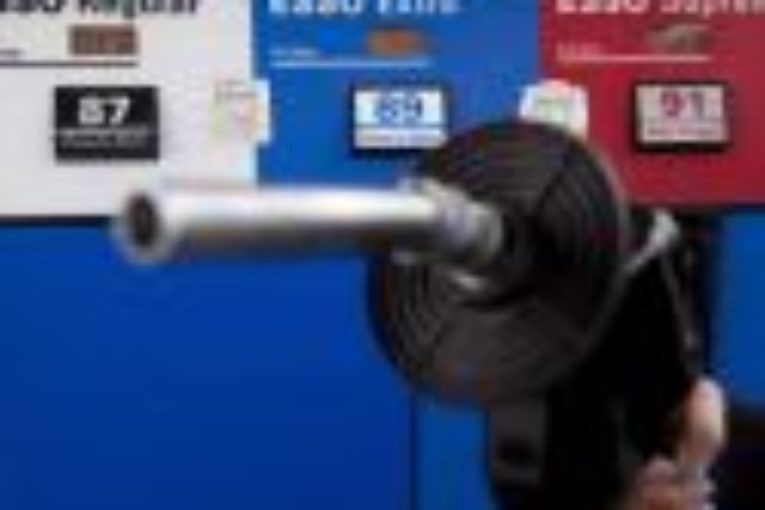
Ontario Premier Doug Ford has accused gas stations of “price gouging” consumers on holidays and long weekends, reigniting a long-held belief among some that retailers often step on the throats of Canadian drivers during periods of high demand.
But is that really the case—and moreover, is it ever wise for governments to intervene when prices are on the rise?
Dan McTeague, senior analyst at GasBuddy, says government attempts to control prices are misguided efforts that ignore the root of the problem: a weak Canadian dollar dragged down by ironically low prices for Canadian crude oil, and increasingly slim operating margins for gasoline and diesel distributors.
“Prices have nothing to do with what (domestic) retailers are doing, and everything to do with global markets,” McTeague said.
The weak Canadian dollar alone translates into a roughly 15 per cent premium on Canadian pump prices, McTeague said. The loonie was trading around 77 cents this week compared to the U.S. greenback. In a cruel twist, the difficulty facing Kinder Morgan Canada Ltd. and TransCanada Corp. in building new export pipelines has placed a discount on domestic crude oil, hurting the value of our currency—which, in turn, has weakened Canada’s buying power of goods priced in U.S. dollars, including oil.
Shortly after winning the Ontario election, Ford put gas retailers “on notice” for price gouging, and promised that weekend price spikes were “not going to happen” under his leadership. He campaigned on a promise to reduce gas prices by 10 cents per litre across the province.
Paying no heed to the premier, average gas prices in Ontario were up $1.32 per litre last week, according to GasBuddy data, a more than 20 per cent rise from a year earlier. Prices in Alberta were $1.31, just beneath its 2008 record, and $1.46 in British Columbia.
But studies have shown that the very notion of price gouging isn’t supported by hard numbers.
“It’s something that’s persisted for a while, and we consider it a bit of a myth,” said Jason Parent, vice-president of consulting at Kent Group Ltd.
Kent published a report in 2014 that assessed gas prices in nine major Canadian markets over eight years, tracking whether prices indeed spiked ahead of long weekend and holidays. They found that prices instead remained flat during those periods, and even fell during holidays in some regions.
Parent attributes accusations of price gouging to generally higher gas prices in the summer, as well as a bad case of confirmation bias: drivers notice when prices go up, but pay no mind when they fall.
“There are a lot of holidays that come in spring and summer, when prices tend to be on the rise anyways,” Parent said.
Even so, retailers no doubt raise gas prices over generally high-demand periods, McTeague said. Consumers see frequent price spikes due mainly to so-called “gas wars,” in which retailers initially drive down their prices in a bid to attract more customers—only to suddenly raise them in order to recoup costs.
Costs for wholesale supplies are mainly the same across the board, so any fluctuations are typically due to retailers aiming to stay within their roughly 10 per cent operating margins.
“It’s the last 12 cents that’s the only thing that goes up and down like an elevator,” McTeague said.
A spokesperson for the Canadian Fuels Association declined to comment specifically on pump prices, noting that most retail sites are independently owned.
It said gas prices fluctuate based on a number of factors, including crude oil prices, taxes, wholesale prices and retailer markups. The group represents distributors such as Husky Energy Inc., Parkland Fuel Corp. and Petro-Canada Lubricants Inc.
Canadian gas prices remain high compared to the U.S., largely due to its more burdensome tax regime. According to its website, Royal Dutch Shell Plc said between 25 and 35 per cent of its input costs for gasoline and diesel production are federal, provincial and municipal taxes. The company said its other input costs include raw materials like crude oil (45-55 per cent); refiner’s margins (10-25 per cent); and retailer margins (4-6 per cent).
Still, Canadian gas prices are low compared to other developed nations. Average price for a litre of gasoline in Canada stood at US$1.02 in June 2018, compared with US$1.37 in Japan and US$1.69 in Germany, according to the Paris-based International Energy Agency. Prices in the U.S. averaged US$0.76.
High prices at the pump have prompted various government’s to offer solutions, including Ford’s recent promise to trim 10 cents off of every litre of gas.
Analysts say Ford’s recent move to scrap the province’s cap-and-trade program will make some inroads towards meeting that goal, lowering gasoline prices by 4.3 cents per litre and diesel by 6.7 cents per litre. The rest would have to be made up elsewhere, potentially by trimming gas taxes.
Other political figures in Ontario have opted for more interventionist strategies. NDP MPP Gilles Bisson tabled a private member’s bill last week that aimed to reduce gas prices by “implementing predictable and consistent retail pricing of petroleum products,” among other measures. The Ontario Energy Board would be responsible for monitoring and administering the measure.
“Prices spike whenever these companies decide to raise them, and family budgets are at their mercy,” Bisson said in a statement Tuesday. “It’s time to get these price hikes under control so Ontario drivers and their families can have peace of mind – and a healthier cost of living.”
McTeague said Bisson’s proposed price regulations do not guarantee lower prices at the pump, as they could restrict companies’ ability to maintain operating margins, in turn raising the average price of gasoline and diesel over time.
“The idea is dumber than a bag of hammers,” McTeague said. “It’s actually going to lead to higher prices rather than lower prices.”
• Email: [email protected] | Twitter: jesse_snyder
You can read more of the news on source
